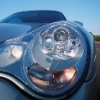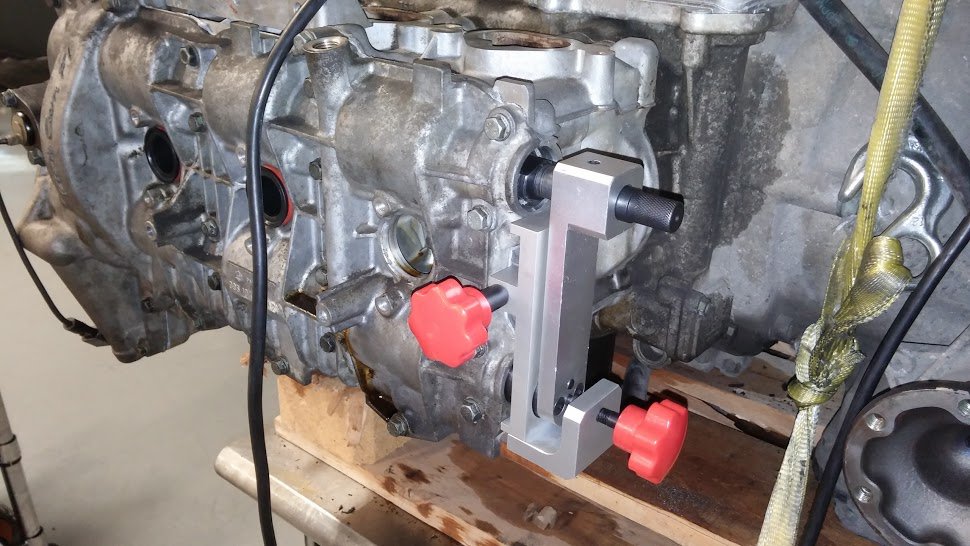Welcome to RennTech.org Community, Guest
There are many great features available to you once you register at RennTech.org
You are free to view posts here, but you must log in to reply to existing posts, or to start your own new topic. Like most online communities, there are costs involved to maintain a site like this - so we encourage our members to donate. All donations go to the costs operating and maintaining this site. We prefer that guests take part in our community and we offer a lot in return to those willing to join our corner of the Porsche world. This site is 99 percent member supported (less than 1 percent comes from advertising) - so please consider an annual donation to keep this site running.
Here are some of the features available - once you register at RennTech.org
- View Classified Ads
- DIY Tutorials
- Porsche TSB Listings (limited)
- VIN Decoder
- Special Offers
-
OBD II P-Codes - Paint Codes
- Registry
- Videos System
- View Reviews
- and get rid of this welcome message
It takes just a few minutes to register, and it's FREE
Contributing Members also get these additional benefits:
(you become a Contributing Member by donating money to the operation of this site)
- No ads - advertisements are removed
- Access the Contributors Only Forum
- Contributing Members Only Downloads
- Send attachments with PMs
- All image/file storage limits are substantially increased for all Contributing Members
- Option Codes Lookup
- VIN Option Lookups (limited)
-
Posts
2,804 -
Joined
-
Last visited
-
Days Won
10
Content Type
Profiles
Events
Forums
External Paint Colors
Downloads
Tutorials
Links Directory
Collections
Store
Posts posted by Ahsai
-
-
-
There are two versions of AOS (for mkI and mkII) and they both look similar to this
Make sure you get only a genuine AOS. Any aftermarket AOS is a waste of time.
The internal AOS you refer to are inside the oil sump, which normally do not need replacement.
-
15 minutes ago, rhkwon said:
What is the part number of that smaller diameter hose that connects to the T and goes down into the middle of the engine area right by some of the pulleys? And is this hose connected by a plastic fitting? My car seems to have had this hose replaced long ago with non OEM parts by a novice mechanic.
What year and model is your car?
-
Yes, the oil needs to be drained for the bank 1 tensioner to be replaced. If you drain the oil to a clean container, the oil can be reused.
The IMS tensioner p/n is correct.
Yes, cam deviation = 0 means your cams are timed perfectly. The spec allows +/-6 degrees from 0 degree so you do have some tolerance.
Based on your description, your cam is lagging behind the crank because the engine rotates clockwise and that:s exactly why the cam devitaion is negative (lagging). It does look like 7 degrees or more off to me. You can estimate. A full circle is 360 degrees...
-
Boxster meditation haha. I like it.
Yeah, sounds like the chain tensioner. Perhaps also why it didn't put enough pressure on the chain while you did the timing, causing the inaccurate timing. May not be a bad idea to get a new tensioner.
-
I would highly recommend finding someone who works on 996 (not just other German cars) on a daily basis for AOS replacement. You really don't want to pay someone to learn how to fix a 996.
Engine oil does not need to be changed at all. Some coolant will need to be drained and later reused and yes, you will likely need some coolant to top off.
-
+1
I so recommend anyone new to the mechanical world to tackle this job. You may want to try a reputable indie.
With the engine out, it's a 5 min job. With the engine in, 4hrs, if you are good. Can easily dragged to a day or two for the first time.
-
There should not be any spacers between the engine block and the carrier. You have twist the belt 90 degree to make clearance at a few spots.
-
Um, that's strange. Perhaps your DME doesn't support it. I know the 996 3.4 and 3.6 both support the misfire counters (per cylinder) and the actual (absolute) cam angle.
Perhaps some Boxters/Durametric users can chime in.
-
Under DME, actual values, same place you read the cam deviation. It's called "actual cam angle". If you select graphical display, Durametric will plot the values in real-time. Then you just rev the engine and see how the readings change. Your variocam is on/off so the actual should change cleanly and quickly at the transition points.
No idea how 7.5 cam degrees translate to lining up with the cam cover seam but probably noticeable. You need to turn the crank at least that many times to recheck timing in case something has shifted.
-
Before you do anything, could you plot actual cam angle of BOTH banks and compare them when you rev the engine up and down?
Some cases the cam actuator is "lazy" that can also cause misfires. It should be obvious if you compare between the two banks.
I think if you really need to eyeball the timing, you could try to err on the side that gets you more positive cam deviation (since cam deviation will keep going more negative as the cam pads wear). BTW, do you use blue loctite on the cam sprocket bolts? Also, make sure you turn the crank at least 6 to 8 complete turns and recheck the timing every 2 turns before you button things up.
-
Yes, n is just the number of turns of the crankshaft. I'm sorry to say but you cannot eyeball the timing. The proper tool is needed. The reason is it takes 2 turns of the crankshaft (720 degrees) for one cam to turn 360 degrees. I.e. if the cam is off by 5 degrees, the crankshaft will be off by 10 degrees. Your current -15 degree off is referred to the crank. That means your cam is "only" 7.5 degrees off and that's enough to cause misfires.
-
If the aftermarket exhaust is after CAT mod, it should not affect the cats barring any exhaust leak. Yes, it's possible the codes were erased before because it takes time for the DME to run repeated CAT tests before it gives up at n then and trip the CEL. Could take hundreds of miles depending on how bad the cats are.
-
Agreed with everthing you said except that the AOS should not affect your cats. I'm curious why you get both p0420 and 0430 the same time. So your CEL just came on now?
Yeah, it's possible the AOS is cracked because it is made of plastic.
-
-
One thing comes to mind. Make sure the cam reluctor did not slip and rotated out of its original position. I think there's a tab to fix the reluctor so shifting should not be possible but I don't quite remember now.
-
If the color links line up at the beginning, that's all that matters. Once you turn the crank/cams, the matching relationship will be lost, until n turns later. I don't recall but n is probably a large number.
Of course in additon to the links lining up, you still need the proper cam timing tool to set the timing accurately. Using the stock tensioner to maintain tension is probably ok.
-
The AOS has two coolant lines connected to it, held by two small hose clamps. The leak could occur at the connection. One will need to pressure test the cooling system and visually check where the leak is coming from and go from there.
-
The TRA should vary a bit when you rev the engine. The FRA is more long term adjustment when engine is under load so just revving the engine a bit won't make FRA move. You have to drive the car but even then you may only see small changes day to day.
Yes, the small actuator pads. When you retime it, make sure the chain marked links are at the correct places on the cam sprockets.
-
You're welcome! Let us know how it goes.
-
Excellent. Bank 1 cam deviation is way out of spec, which is 0.0 +/- 6.0 degrees and you have -15 degrees. I believe that's the source of your bank 1 random misfires. The solution is to re-time bank 1 and replace the cam pads if they are original/worn out.
Both banks are running RICH under load based on the FRA readings. FRA in bank 1 is a bit low at 0.87, which means the DME is reducing the fuel by 13%. Bank 2 fuel is reduced by 7%, not too bad. The bank 1 FRA could be a consequence of the excessive cam deviation.
TRA1 and TRA2 numbers are in % and they look great. So it seems no intake air leak.
For monitoring misfires, go to DME actual values and select "Misfire cylinder #1", "Misfire cylinder #2", etc.
-
11 hours ago, wyovino said:
Bore scoring? Cylinder 4 is textbook bore scoring victim for MY2003.
While the cylinders may be scored, I doubt bore scoring will trip the very specific intake valve lifter codes.
It sucks that one cannot inspect the lifters without removing the cam cover, which involves a lot of labor. That's why the factory manual recommends replacing ALL the lifters (intake and exhaust) of the bank that is affected. The logic is if one lifter went bad, it's possible the others could follow since they wear similarly and are subject to the same operating conditions.
If the mileage is high, it will also be a good opportunity to replace the timing chain pads.
-
Great numbers. Spec is 0 degree +/- 6 degrees so yours are way within spec.
You may want to read or re-read the two threads I mentioned before. They have identical symptoms and intake valve failure.
-
Excellent. I'm not too familiar with those codes but per the DME 7.8 diagnostic info for 996 P1362 is intake valve of cylinder #4 does NOT switch to small lift i.e. stuck at large lift. That makes sense because at low rev, the intake valves should use small lift and they change to large lift at higher rev. That's how variocam+ works. You mentioned misfires occur only at low rpm. That's because the lifter #4 is stuck at high lift.
P1371 is a general lifter code for any cyl #1-#6 do not switch to small lift.
I think it's time to remove the bank 2 cam cover and inspect all the intake valves.
BTW, can you check the "Cam deviation" readings of both banks? Are they solid and remain constant regardless of revs? This does not change the above but I am just curious about the general health of the engine.




The Forever CEL
in 986 Series (Boxster, Boxster S)
Posted
Yes, that slot is a mile off where it should be. Cam deviation readings don't lie.
I would not recommend you breaking the cam seal like that but yes some scavenge pumps are really a tight fit.